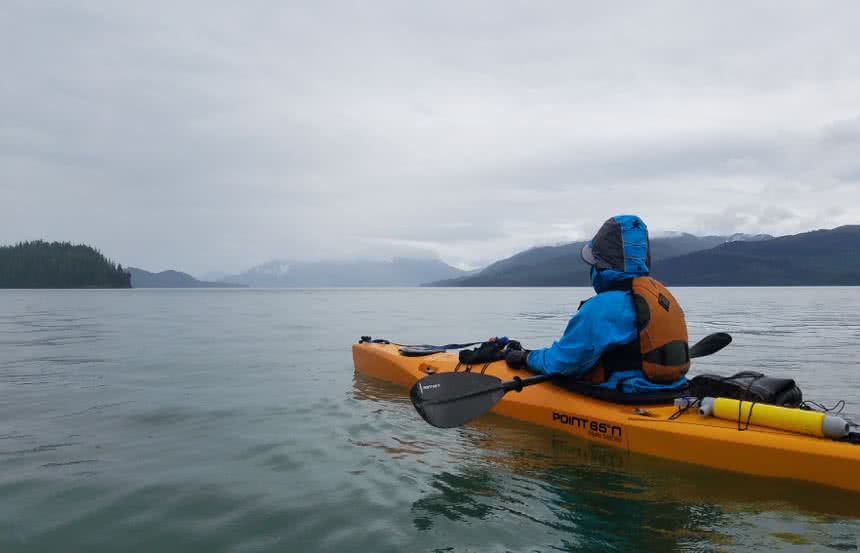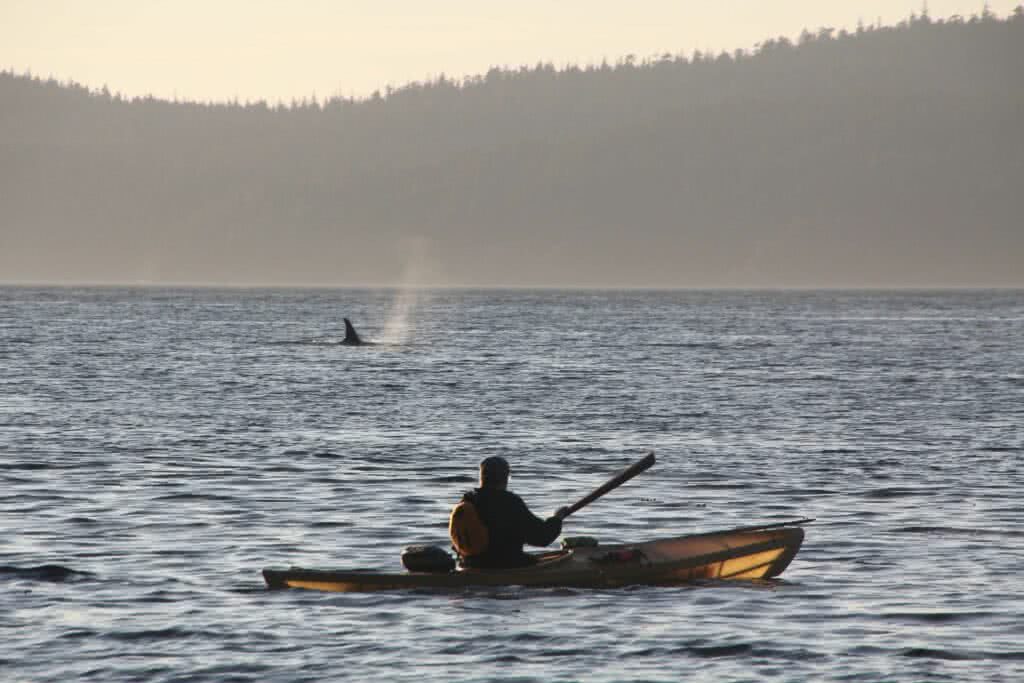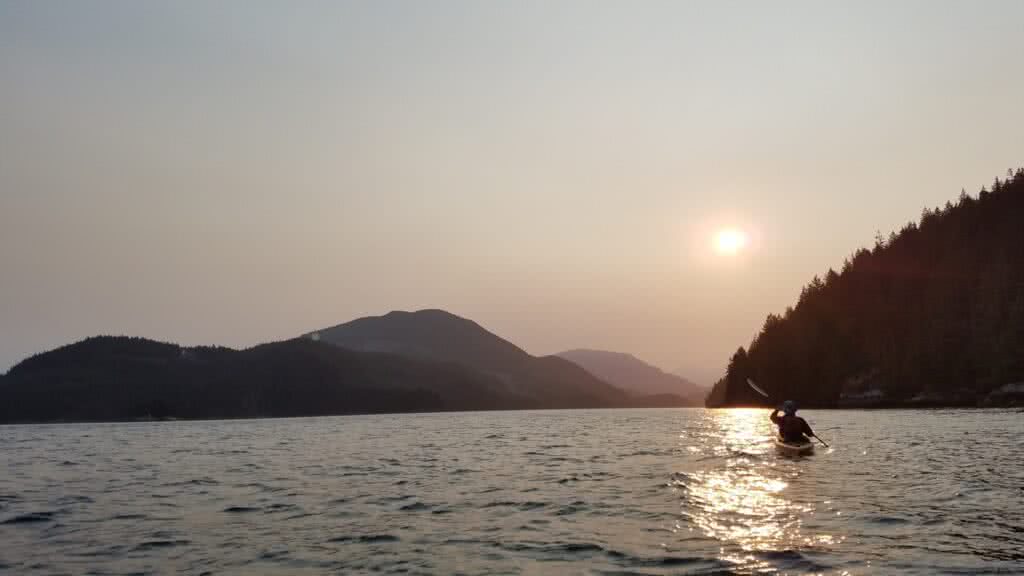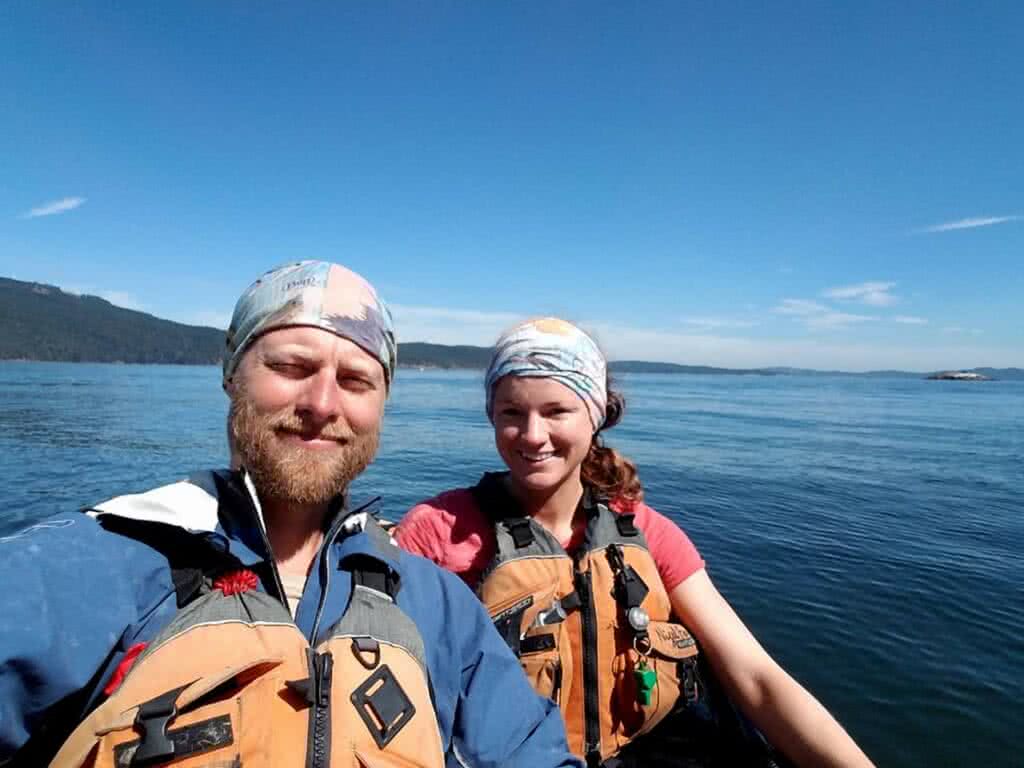Over the span of two months Kelly Durst and Paul Everitt paddled from Skagway, Alaska down into Sidney, British Columbia for one epic trip. Following the Inside Passage, these two adventurers were surrounded by the many wonders of the Pacific Northwest.
Okay! Let’s talk trip
Firstly, when did you start and how long did the trip take?
A: Kelly and I started early May by taking the ferry north from Bellingham, WA to Skagway, AK. We made our way to the start in Skagway, Alaska after a number of days on a ferry heading up towards the starting point. Our first paddling day along the Inside Passage started May 11th, just in time for Kelly’s birthday. In total the trip took us 103 days to reach Sidney on Vancouver Island, with 80-85 of those being paddling days.
Q: What inspired you to paddle from Alaska down to Vancouver Island?
A: Well, it was kind of a mistake. We were keen to paddle the Yukon River, but the more we researched this and added up the costs it wasn’t suiting our budget at the time. While we looked into the Yukon River, we stumbled across a Youtube video that highlighted the ferry that we took North from Washington to Alaska. On that very ferry you could pitch your tent on the top deck for the duration of travel… This simple idea of camping on a ferry completely changed our destination and direction. Prior to this, the Inside Passage wasn’t even on our radar.
 Q: Where did you start and how did you get there? Any thoughts and feelings leading up to the actual departure day?
Q: Where did you start and how did you get there? Any thoughts and feelings leading up to the actual departure day?
A: Starting point for us was Skagway, Alaska and to get there we took the Alaskan Marine Highway ferry. You depart Bellingham on the Friday and arrive on the Monday. The ferry ride alone gave us a big insight into what was ahead. Some of the same routes the ferry took would be what we would eventually paddle many weeks later. This was, without a doubt, our biggest and wildest journey to date due to all the remoteness and wildlife we would potentially encounter. Our minds were somewhat wondering about all the “what ifs”, but together Kelly and I work great together, knowing each other’s strengths and weaknesses.
We try not to worry too much about the potential unknowns, but we do try to be prepared for as much as possible pre-departure to calm our nerves.
Q: How often did you come across towns or communities for resupply, what was your longest stretch without anything?
A: Between 7-10 days paddling would be our resupply time between towns. We would often take food for 10-12 days depending on what stretch we were on. But you will be surprised with the odd floating fishing camp with a restaurant and bar, passing sailing boats/yachts who invite you onboard for food and other welcoming strangers along the way. Some people kayaking the Inside Passage post their food supplies ahead of time, but we decided that we would contribute to the small towns we would pass through as opposed to dehydrating and shipping other supplies ahead from Seattle.
Q: In the first few weeks, what were some highlights or favourite areas along the Inside Passage?
A: Our first few weeks were happily spent on the Alaskan coastline and I would say it’s hard to pick one particular spot that gave me the most joy. Our second day paddling was Kelly’s birthday so to spend that evening camping on a sandbank in an area known for hungry bears was pretty majestic. We gazed out to the vast channel system and watched passing cruise ships in the distance and wondered what type of food they would dine to as we rustled up some pasta next to a campfire. It was a pretty perfect situation.
Q: Any difficulties when you first started paddling?
A: Like most trips it was all about getting our gear packed right. It normally takes us a few days to settle into a routine. The kayaks we were using was very familiar to us as we used the same brand/models to kayak the Baltic Sea. Our plan was simple – don’t do anything stupid and just enjoy it no matter what.
Q: What safety precautions did you have to take on the voyage?
A: Halfway would have been around Prince Rupert and we’ve managed to stick to our “loose” time frame. We would always allow for extra days due to potential bad weather/delays and would always listen to our VHF radios for weather updates or check in with locals when we could for a more detailed outlook on the weather. If anything bad was brewing we would sit it out, we would avoid as much bad weather paddling as we could to increase our safety.
We had it pretty good though with the weather from start to finish, and we only had to sit out a few days in Ketchikan and some bad swells around Cape Fox…. I think we got lucky.
Navionics is also a great App to download to help navigate – this would have be the go-to on our mobile device.
Q: Any challenging days for you?
A: Probably the day I had to have my food rations rationed even more. Towards the middle of the trip, I needed more and more food and ,well, I kind of over ate. Due to a few delays, we had to be careful with the food we had left. It was incredibly uncomfortable.
Q: How did people treat you along the way?
A: Like most other journeys we’ve done, it’s safe to say there are some amazing people to be found on any route you take. People will often stop and ask you “What’s happening? Why are you doing this? Do you want a beer?”. And once you start talking, the best things happen in return. It will leave you wanting to do more for others when you see them taking on a challenging life. It’s amazing how the of simple gestures of generosity can change a day.
Q: What was the feeling once you got to Sidney?
A: Sadness, to be honest. I still haven’t gotten over it. It’s a journey that will stay with me for a long time. It was the freest and most relaxed I’ve ever been in life. It’s been hard to adjust since this trip has ended and I’m grateful that Kelly understands and also feels the same. As most other people I know, it can be hard to understand or connect with how it feels to return to the rush and hustle of normal living.
Five Pieces of Essential Gear
1. A good stove, well our stove is a simple $20 single burner – This affordable guy with no name has never let us down.
2. Water to go bottle: a handy and fast working way to filter/purify water. A very simple but effective bit of kit.
3. Buff or maybe a few Buff’s – I’ve used these in so many ways and not just to keep my hair pretty.
4. First aid kit, and a well-stocked one at that. It’s easy to get an infection from the smallest of cuts, so having a reliable means of maintaining your well-being is important when miles from anywhere.
Finally, a gold pan… now I didn’t get one of these until a month into our trip through the Inside Passage, but it brought me so much joy when we would find a creek to camp beside. Sadly, never found my nugget. Also, I guess this isn’t “essential”, but downtime & relaxation is always important.
Thank you, Paul and Kelly!
From the Staff at ORS!
Facebook: Going Solo Adventures by Paul Everitt
Website: www.going-solo.co.uk
Instagram: @GoingSoloAdventures @PaulEveritt @Kelly.Durst






Hi,
What challenging spots you see with a canoe?
Thx
Thants for the info on your trip, Vary helpful.
Going to do the same trip but up to Alaska from Sechelt B.C.
Thanks